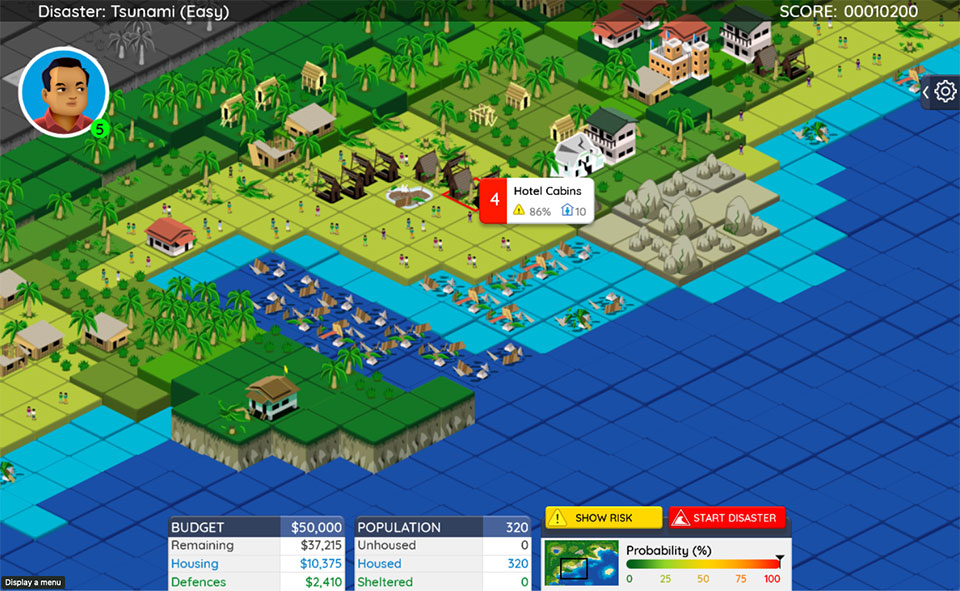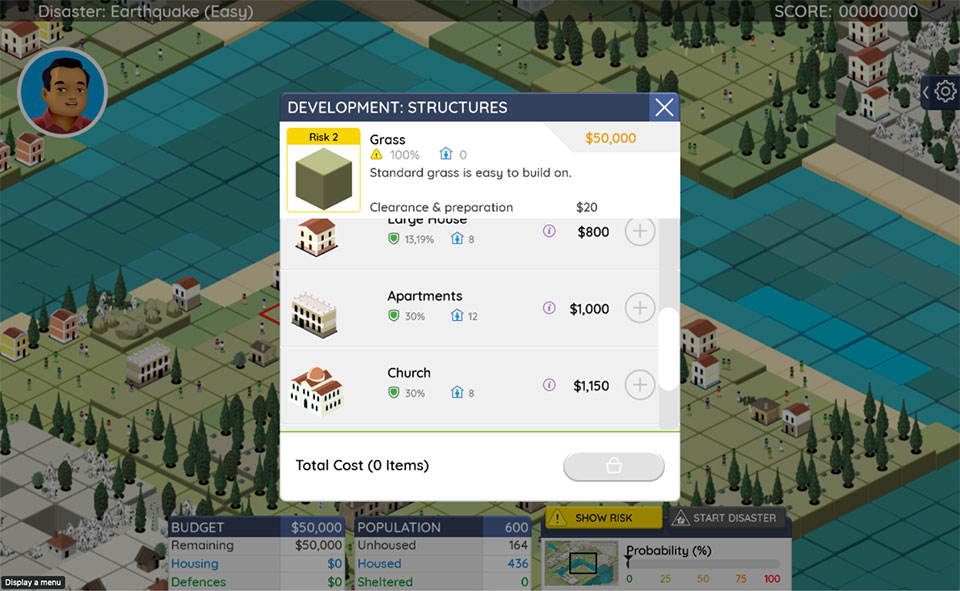Stop Disasters 2
Playerthree developed the original Stop Disasters back in 2007 for the UNISDR. At the time Adobe Flash was the best delivery platform. Now Flash is effectively blocked by most browsers online games are developed using HTML5 and WebGL. Stop Disasters has been hugely successful for the UN and for educating children, teachers and communities about disaster reduction. Playerthree and the UN receive almost daily feedback about its benefits and requests for improvements to the scenarios, disaster types and languages.
Therefore the UNDRR (the agency’s new name) agreed to fund the updating of the existing game into HTML5 as well as updating the website. We took the opportunity to improve many features of the game, refresh the visual interface to work for desktop and touch interfaces as well as add some nice environment and character animations.
You can also freely scroll around the levels now, but we decided to maintain the isometric tile approach as it worked so well in visualising risk maps and condensing information for users.
If you haven’t played it (please do) Stop Disasters tackles the very real issue of saving lives and reducing the financial impact that natural hazards cause when they develop into disasters.
This sim disaster style employs strategy, planning and constructive activities to raise awareness of how disasters affect people every day and how often very simple measures can save many lives. Knowledge is power.
Whether you call it a ‘serious game’ or ‘edutainment’, projects such as these are tough to balance. Young audiences are easily turned off by too many facts whereas too much ‘fun’ lessens the gravity of the subject matter. Gaming allows for the staged delivery or bite-sized information in layers that the user discovers on the way to achieving their goals, rather than being spoon-fed information that they won’t retain.
The game is aimed at a global secondary level education audience on low level spec machines, has been translated into 5 languages so far and we hope to add further languages soon.
Using a game to promoting such a serious issue is recognition by the UNDRR that targeting a youth audience requires a step change in approach from their existing data fact sheets and school packs.
































